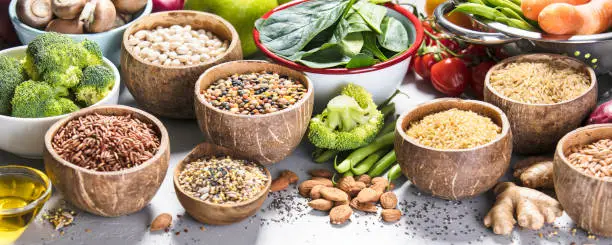Fiber, a complex carbohydrate found in plant-based foods, plays a vital role in maintaining a healthy digestive system. Despite its importance, many people fail to consume adequate amounts of fiber, leading to a range of digestive issues. In this article, we’ll explore the relationship between fiber and the absorption and digestion of food, highlighting the benefits of a high-fiber diet.

The Digestive Process: A Brief Overview
The digestive process begins in the mouth, where food is broken down by enzymes and mechanical chewing. The partially digested food then passes through the esophagus into the stomach, where it’s mixed with stomach acid and digestive enzymes. The partially digested food, now called chyme, enters the small intestine, where most of our nutrient absorption takes place. The remaining waste products then move into the large intestine, also known as the colon, where water and electrolytes are absorbed, and the waste is prepared for elimination.
The Role of Fiber in Digestion and Absorption
Fiber, particularly soluble fiber, plays a crucial role in the digestive process. Soluble fiber dissolves in water, forming a gel-like substance that slows down the digestion and absorption of nutrients. This delayed absorption allows for a more gradual increase in blood sugar levels, reducing the risk of insulin resistance and type 2 diabetes.
Insoluble fiber, on the other hand, does not dissolve in water and helps add bulk to stool, promoting regular bowel movements and preventing constipation.
Benefits of a High-Fiber Diet
A diet rich in fiber offers numerous health benefits, including:
1. Improved Digestion: Fiber helps regulate bowel movements, preventing constipation and diverticulitis.
2. Enhanced Nutrient Absorption: Soluble fiber slows down the digestion and absorption of nutrients, allowing for a more efficient uptake of essential vitamins and minerals.
3. Blood Sugar Control: The delayed absorption of glucose due to soluble fiber helps regulate blood sugar levels, reducing the risk of insulin resistance and type 2 diabetes.
4. Weight Management: Fiber-rich foods tend to be more filling, leading to weight loss and improved weight management.
5. Reduced Cholesterol Levels: Soluble fiber can help lower LDL (bad) cholesterol levels, reducing the risk of heart disease.
Incorporating More Fiber into Your Diet
To reap the benefits of a high-fiber diet, aim to consume 25-30 grams of fiber per day from a variety of sources, including:
1. Fruits: Apples, bananas, berries, and citrus fruits are all high in fiber.
2. Vegetables: Leafy greens, broccoli, carrots, and sweet potatoes are all rich in fiber.
3. Legumes: Beans, lentils, and peas are excellent sources of fiber.
4. Whole Grains: Whole wheat bread, brown rice, quinoa, and whole grain pasta are all high in fiber.
By prioritizing fiber-rich foods and incorporating them into your daily diet, you’ll be well on your way to supporting a healthy digestive system and reaping the numerous benefits of a high-fiber diet.
